#sweyn iii of denmark
Explore tagged Tumblr posts
Link
Sweyn III Grathe was the king of Denmark between 1146 and 1157, in shifting alliances with Canute V and his own cousin Valdemar I. In 1157, the three agreed to...
Link: Sweyn III of Denmark
0 notes
Text
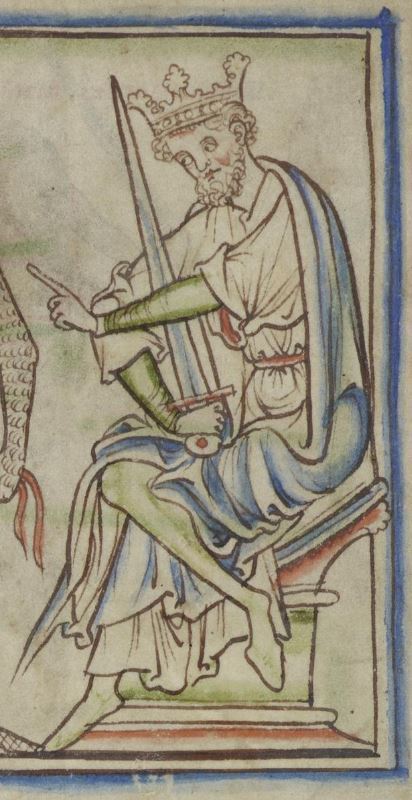


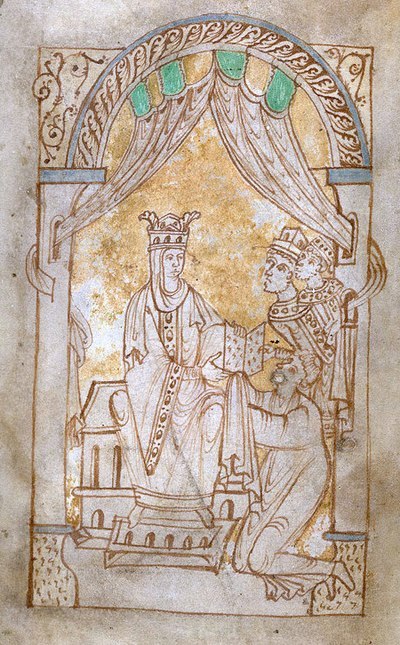
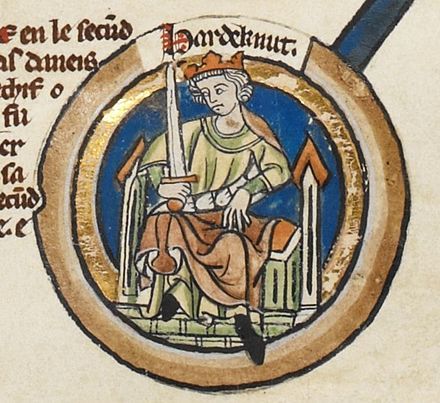

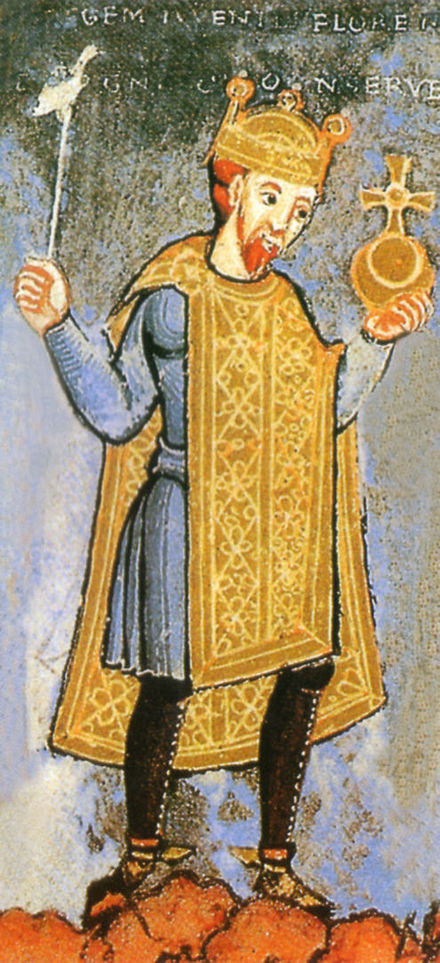
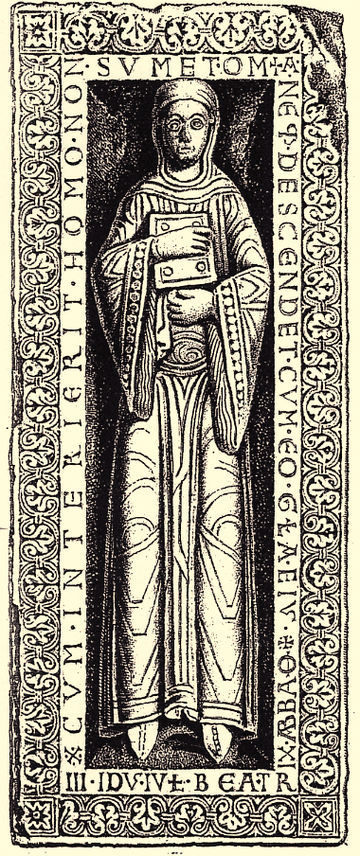


The Bastard Kings and their families
This is series of posts are complementary to this historical parallels post from the JON SNOW FORTNIGHT EVENT, and it's purpouse to discover the lives of medieval bastard kings, and the following posts are meant to collect portraits of those kings and their close relatives.
In many cases it's difficult to find contemporary art of their period, so some of the portrayals are subsequent.
1) Harold I of England (?- 1040), son of Knut the Great and his wife Ælfgifu of Northampton
2) Knut the Great (c. 990 – 1035), son of Sweyn Forkbeard and his wife Świętosława of Poland
3) Sweyn Forkbeard (963 – 1014), son Knut Danaást or Harald Bluetooth and his wife Tove or Gunhild
4) Emma of Normandy (c. 984 –1052), daughter of Richard I of Normandy and his wife Gunnor
5) Harthacnut/ Knut III of Denmark (c. 1018 – 1042), son of Knut the Great and his wife Emma of Normandy
6) Gunhilda of Denmark (c. 1020 – 1038), daughter of Knut the Great and his wife Emma of Normandy
7) Holy Roman Emperor Henry III (1016 -1056), son of Holy Roman Emperor Conrad II and his wife Gisela of Swabia
8) Beatrice of Franconia (1037 – 13 July 1061), daughter of Holy Roman Emperor Henry III and his wife Gunhilda of Denmark
9) Edward the Confessor (c. 1003 – 1066), son of Æthelred II of England and his wife Emma of Normandy
10) Ælfred Æþeling (c. 1012–1036), son of Æthelred II of England and his wife Emma of Normandy
#jonsnowfortnightevent2023#canonjonsnow#asoiaf#a song of ice and fire#day 10#echoes of the past#Beatrice of Quedlinburg#historical parallels#medieval bastard kings#bastard kings and their families#harold i of england#harold harefoot#cnut the great#knut the great#sweyn forkbeard#emma of normandy#harthacnut#cnut iii of denmark#Gunhilda of Denmark#Beatrice of Franconia#Beatrice I of Quedlinburg#holy roman emperor henry iii#henry the black#edward the confessor#Ælfred Æþeling#alfred aetheling
17 notes
·
View notes
Photo
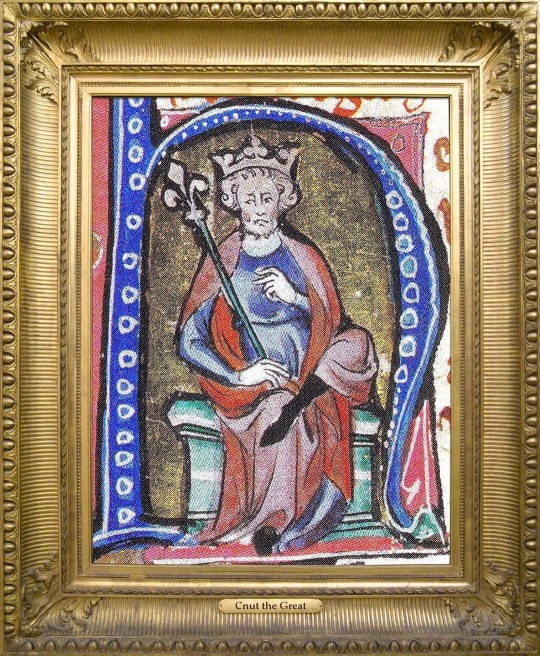
Cnut the Great . (Old English: Cnut cyning; Old Norse: Knútr inn ríki; also known as Canute. . King of Denmark: 1018–1035. King of the English: 1016–1035. King of Norway: 1028–1035. . English Coronation: 1017 in London. . Born: c. 990. . Parents: Sweyn Forkbeard & ? House of: Jelling . Married: . 1.) – Ælfgifu of Northampton. Ælfgifu (c. 990 – after 1036) was a daughter of Ælfhelm, ealdorman of southern Northumbria, & his wife Wulfrun. . Children; . Sweyn Knutsson (c. 1016–1035), king of Norway. . Harold Harefoot, King of England. . 2.) – Emma of Normandy (c. 984 – 6 March 1052), previously married to Æthelred the Unready, twice Queen of England. . Children;
Harthacnut, King of Denmark and England . Gunhilda of Denmark, (c. 1020 – 18 July 1038). She wed Henry III, Holy Roman Emperor. . Died: 12 November 1035 (aged around 45), Shaftesbury, Dorset, England. Burial: Old Minster, Winchester, England. Bones now in Winchester Cathedral, Winchester, England. . Successor: Harold Harefoot (son) . . . #kingsandqueensofgreatbritain #kingsandqueens #Monarchy #RoyalHistory #Royalty #Royals #History #Portraitpainting #historyinpictures #Britishhistory #BritishMonarchy #Art #Painting #Monarch #EnglishHistory #EnglishMonarchy #Medievalhistory #Medievaltimes #HistoryFacts #medieval #MedievalEngland #Viking #Vikings #Cnut #canute #Cnutthegreat #Danes #kingofdenmark #Kingofnorway #kingoftheEnglish (at London, United Kingdom) https://www.instagram.com/p/CRpUJ9jMtyI/?utm_medium=tumblr
#kingsandqueensofgreatbritain#kingsandqueens#monarchy#royalhistory#royalty#royals#history#portraitpainting#historyinpictures#britishhistory#britishmonarchy#art#painting#monarch#englishhistory#englishmonarchy#medievalhistory#medievaltimes#historyfacts#medieval#medievalengland#viking#vikings#cnut#canute#cnutthegreat#danes#kingofdenmark#kingofnorway#kingoftheenglish
3 notes
·
View notes
Text
Monarch #7
Who: Æthelred II (Old English: Æþelræd) Also Known As: Æthelred the Unready (his epithet does not derive from the modern word "unready", but rather from the Old English unræd meaning "poorly advised"; it is a pun on his name, which means "well-advised") Where: England Succeeded: His brother, Edward Reigned: 978-1013 and again from 1014-1016 Born: c.966 Died: 23rd April, 1016 (aged around 50), London Buried: Old St Paul’s Cathedral, London (lost) Consorts/Children: First married Ælfgifu of York, sometime in the mid-980s, and she was definitely dead by 1002. With Æthelred she had at least nine children, possibly ten. Second, he married Emma of Normandy in 1002, with whom he had three children.
Æthelred Facts! Æthelred’s (combined) reign of 37 years was the longest of any Anglo-Saxon king of England, and was only surpassed in the 13th century by Henry III.
He came to the throne aged 12, after his mother may or may not have had his older half-brother, Edward, murdered. It’s pretty much accepted that he was far too young to have been involved.
This is the moment that the Danish started being seriously problematic. After decades of more-or-less peace, the Danish raids restarted in 980 and how. After the Battle of Maldon in 991, Æthelred paid tribute to the Danish king called Danegeld, intended to bribe him into going the heck away.
This didn’t work. So, in 1002, Æthelred ordered the massacre of Danish settlers in what became known as the St Brice’s Day massacre. Supposed amongst the killed is Gunhilde, the sister of Sweyn Forkbeard, the King of Denmark. Æthelred justified the massacre in a royal charter of 1004, explaining the need to rebuild Saint Frideswide’s church[1].
Gunhilde may or may not have died then, but it was given as a justification of Sweyn’s invasion of England in 1013 (maybe it took nine years for him to build up both an army and a really good snit over it). Æthelred ran away to Normandy, and Sweyn Forkbeard ruled for a few months before dying. Æthelred then came back and ruled until he died, two years later.
Æthelred has been credited with the formation of a local investigative body made up of twelve thegns who were charged with publishing the names of any notorious or wicked men in their respective districts. Because the members of these bodies were under solemn oath to act in accordance with the law and their own good consciences, they have been seen by some legal historians as the prototype for the English grand jury. Æthelred makes provision for such a body in a law code he enacted at Wantage in 997, which states:
that there shall be an assembly in every wapentake,[n 4] and in that assembly shall go forth the twelve eldest thegns and the reeve along with them, and let them swear on holy relics, which shall be placed in their hands, that they will never knowingly accuse an innocent man nor conceal a guilty man. And thereafter let them seize those notorious [lit. "charge-laden"] men, who have business with the reeve, and let each of them give a security of 6 half-marks, half of which shall go to the lord of that district, and half to the wapentake.[3]
The Anglo-Saxon Chronicle is incredibly critical of Æthelred, but was written in retrospect and could be seen as to be judging his policies and actions with the foregone conclusion that he was always doomed to lose to the Danish. There have been some arguments in favour of Æthelred made, and indeed recent assessments have cautiously come down in favour of him. "Æthelred's misfortune as a ruler was owed not so much to any supposed defects of his imagined character, as to a combination of circumstances which anyone would have found difficult to control.”[4]
Ælfgifu of York Facts! We think she was born in the 970s and died before 1002, when Æthelred remarried. She might have been the daughter of Thored, the Earl of southern Northumbria. The problem here is that what we know of her comes from sources written in the 1080s and afterwards. The first (from Sulcard of Winchester) describes her as being “of very noble English stock” but declines to name her. William of Malmesbury, writing in the 12th century has nothing to say of her at all, whilst in the 1150s, Ailred of Rievaulx notes her as the daughter of Thored and mother of Edmund, but again does not name her. Even though he was writing so late, he was the seneschal at the court of the Scottish king David I, whose mother Margerat was the great-granddaugther of Ælfgifu and his information may have come to him through genuine sources. And that is pretty much all we know about her, apart from the names of her children. Even her date of birth and the date of her marriage is supposed based on what we know about her sons. Of her daughters we have very little information, even some of their names are vague, and there is one who is posited, unnamed, and cannot be confirmed.
Æthelstan Ætheling (died 1014)
Ecgberht Ætheling (died c. 1005)[40]
Edmund Ironside (King of England, died 1016)
Eadred Ætheling (died before 1013)
Eadwig Ætheling (executed by Cnut 1017)
Edgar Ætheling (died c. 1008)
Eadgyth or Edith (married Eadric Streona) v
Wulfhild? (married Ulfcytel Snillingr)
Abbess of Wherwell Abbey?
Emma of Normandy Facts! As queen of England, Emma wasn’t allowed to be called Emma. She was Ælfgifu in official royal documents.
She was the daughter of Duke Richard I of Normandy and his wife, Gunnor (also called Gunnora).
Her first marriage, to Ælthelred, was made in order to keep relations between Normandy and England cordial. Things had been going downhill after Richard II of Normandy, Emma’s brother, welcomed Danish Vikings to the dukedom and gave them sanctuary, violating a treaty between Æthelred and Richard I, wherein the duke had sworn not to aid the enemies of England after he too had been giving the Danes assistance.
During the Danish invasion by Sweyn Forkbeard, Emma and her children were sent to Normandy, where Æthelred soon followed, but they all came back after Sweyn died.
Little is written of Emma during this time but she’s going to come up again later, because she didn’t stay a dowager queen for too much longer. She married Cnut in 1017.
She had three children with Æthelred:
Edward the Confessor c. 1003 – 5 January 1066
Goda of England c.1004 – c.1049
Alfred the Noble c. 1005–1036
[1] "For it is fully agreed that to all dwelling in this country it will be well known that, since a decree was sent out by me with the counsel of my leading men and magnates, to the effect that all the Danes who had sprung up in this island, sprouting like cockle amongst the wheat, were to be destroyed by a most just extermination, and thus this decree was to be put into effect even as far as death, those Danes who dwelt in the afore-mentioned town, striving to escape death, entered this sanctuary of Christ, having broken by force the doors and bolts, and resolved to make refuge and defence for themselves therein against the people of the town and the suburbs; but when all the people in pursuit strove, forced by necessity, to drive them out, and could not, they set fire to the planks and burnt, as it seems, this church with its ornaments and its books. Afterwards, with God's aid, it was renewed by me."
[2]Wormald, Patrick (1978), "Aethelred the lawmaker", in David Hill (ed.), Ethelred the Unready: Papers from the Millenary Conference, British Archaeological Reports - British Series 59, pp. 47–80
[3]Liebermann, Felix (1903). Die Gesetze der Angelsachsen: in der Ursprache mit Uebersetzung und Erläuterungen. Volume 1. Halle a.S.: Max Niemeyer.
[4]Keynes, Simon (1986). "A Tale of Two Kings: Alfred the Great and Æthelred the Unready". Transactions of the Royal Historical Society. Fifth Series 36. 36: 195��217
#Ethelred the Unready#Æthelred II#Æthelred the Unready#Æthelred#kings of england#queens of england#emma of normandy#Ælfgifu of York#monarchs#monarchy
2 notes
·
View notes
Text
Saint of the Day – 10 July– St Canute IV of King of Denmark (c 1042-1086) Martyr – known as “Canute the Holy” – also known as Canute, Canute IV, Canutus, Cnut, Knud IV, Knut, Knute. He was King of Denmark from 1080 until 1086. Born c 1042, one of the many sons of Sweyn II Estridsson and he died by the sword in 1086 in the Church of Saint Alban on the island of Fünen, Denmark. Canute was an ambitious king who sought to strengthen the Danish monarchy, devotedly supported the Roman Catholic Church and had designs on the English throne. Slain by rebels in 1086, he was the first Dane to be Canonised. He was recognised as Patron of Denmark in 1101.
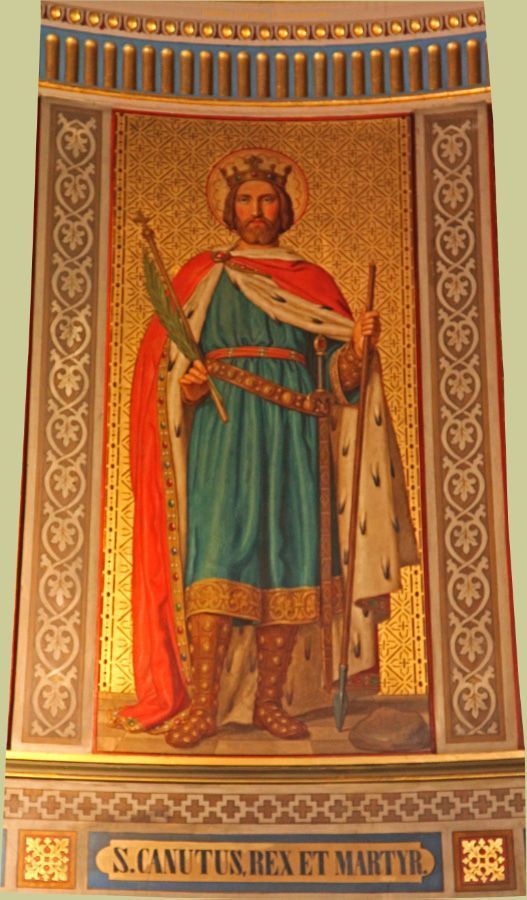
He was born in c 1042 and ascended to the throne in 1080. He was ambitious and devout—he appropriated land for the Church and arranged for the support of clergy by tithes. He was generous in building churches and schools.
Canute was a strong, wise king of Denmark. He was a great athlete, an expert horseman and a marvellous general. At the beginning of his reign, he led a war against the barbarians who were threatening to take over the civilised world. King Canute and his army defeated them. He loved the Catholic faith so much that he introduced it to people who had never heard of Christianity.
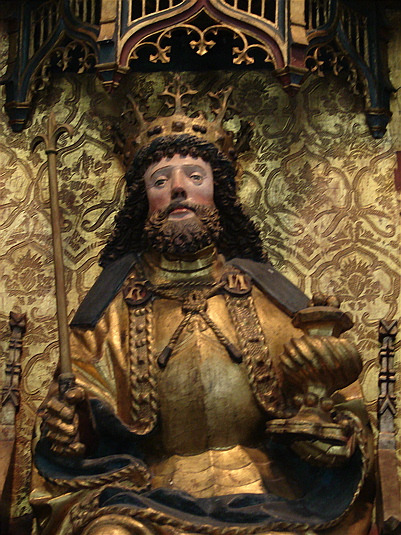
St Canute knelt in Church at the foot of the altar and offered his crown to the King of kings, Jesus. King Canute was very charitable and gentle with his people. He tried to help them with their problems. Most of all, he wanted to help them be true followers of Christ.
However, a rebellion broke out in his kingdom because of the laws he had made about supporting the Church. On 10 July 1086, Canute and his men took refuge inside the wooden St Alban’s Priory in Odense. While his enemies were still outside, King Canute received the Sacraments of Reconciliation and Holy Communion. He felt compassion for those who were upset enough to kill him. With all his heart he forgave his enemies. The rebels stormed into the Church and slew Canute, along with his brother Benedict and seventeen of their followers, before the altar. According to chronicler Ælnoth of Canterbury, Canute died following a lance thrust in the side.
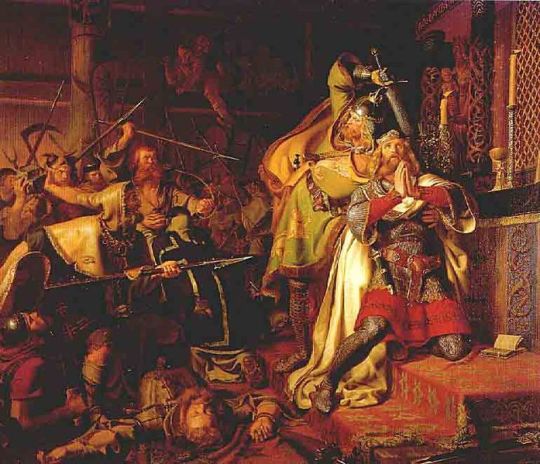
Martyrdom of Canute the Holy by Christian Albrecht von Benzon, 1843
He was succeeded by Olaf as Olaf I of Denmark.
The story of King Canute and the tide illustrates the piety or humility of King Canute the Great, recorded in the 12th century by Henry of Huntingdon.
In the story, Canute demonstrates to his flattering courtiers that he has no control over the elements (the incoming tide), explaining that secular power is vain compared to the supreme power of God. The episode is frequently alluded to in contexts where the futility of “trying to stop the tide” of an inexorable event is pointed out but usually misrepresenting Canute as believing he had supernatural powers, when Huntingdon’s story in fact relates the opposite.
In Huntingdon’s account, Canute set his throne by the sea shore and commanded the incoming tide to halt and not wet his feet and robes. Yet “continuing to rise as usual [the tide] dashed over his feet and legs without respect to his royal person. Then the king leapt backwards, saying: ‘Let all men know how empty and worthless is the power of kings, for there is none worthy of the name but He whom heaven, earth and sea obey by eternal laws.'” He then hung his gold crown on a Crucifix and never wore it again “to the honour of God the almighty King.”
This slideshow requires JavaScript.
Because of his Martyrdom and advocacy of the Church, Canute quickly began to be considered a saint. Under the reign of Olaf, Denmark suffered from crop failure, which was seen as divine retribution for the sacrilege killing of Canute. Miracles were soon reported as taking place at his grave and his Canonisation was already being sought during the reign of Olaf. On 19 April 1101, persuaded by the envoys from Eric III of Denmark, Pope Paschal II confirmed the “cult of Canute” that had arisen and King Canute IV was Canonised as a Saint under the name San Canuto. He was the first Dane to be Canonised.
In 1300, his remains and those of his brother Benedict were interred in Saint Canute’s Cathedral, built in his honour, where his bones are on display.
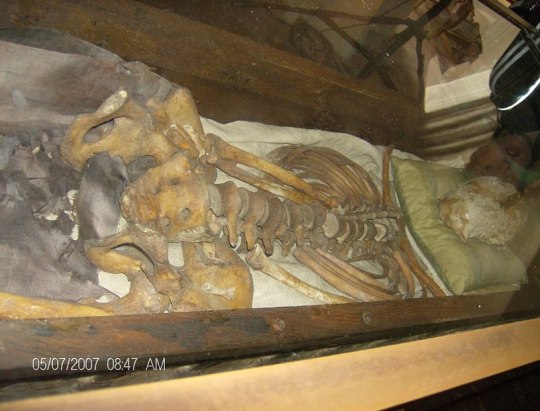
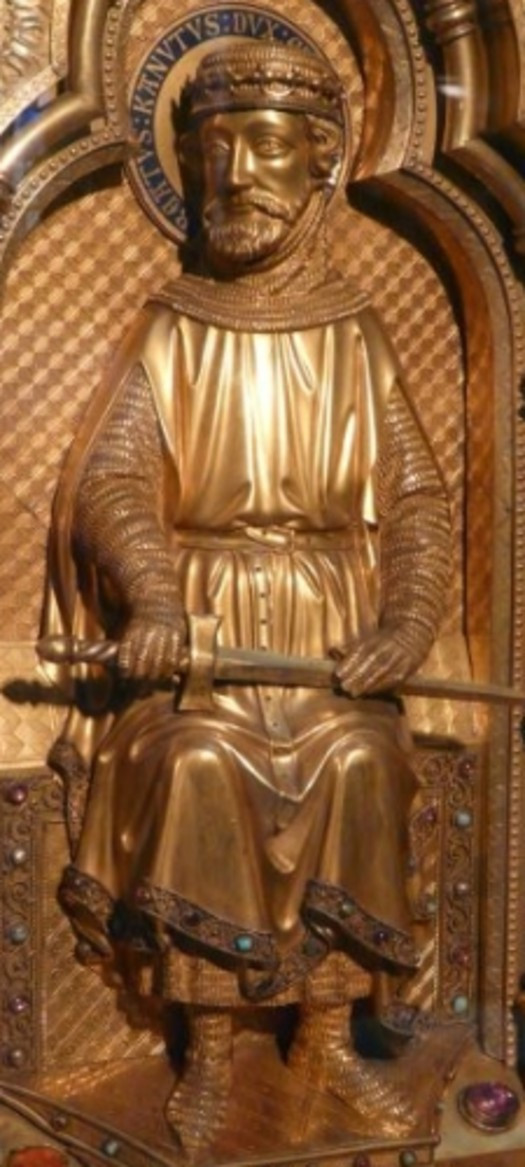
Saint of the Day – 10 July– St Canute IV of King of Denmark (c 1042-1086) Martyr Saint of the Day – 10 July– St Canute IV of King of Denmark (c 1042-1086) Martyr – known as…
4 notes
·
View notes
Photo
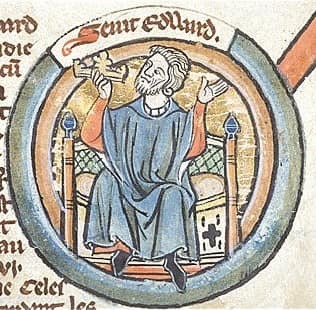
He also received support for his claim to the throne from a number of continental abbots, particularly Robert, abbot of the Norman abbey of Jumièges, who was later to become Edward's Archbishop of Canterbury. Edward was said to have developed an intense personal piety during this period, but modern historians regard this as a product of the later medieval campaign for his canonisation. In Frank Barlow's view "in his lifestyle would seem to have been that of a typical member of the rustic nobility". He appeared to have a slim prospect of acceding to the English throne during this period, and his ambitious mother was more interested in supporting Harthacnut, her son by Cnut. “Edward was the son of Æthelred the Unready and Emma of Normandy. He succeeded Cnut the Great's son – and his own half brother – Harthacnut. He restored the rule of the House of Wessex after the period of Danish rule since Cnut (better known as Canute) conquered England in 1016. When Edward died in 1066, he was succeeded by Harold Godwinson, who was defeated and killed in the same year by the Normans under William the Conqueror at the Battle of Hastings. Edgar the Ætheling, who was of the House of Wessex, was proclaimed king after the Battle of Hastings in 1066, but never ruled and was deposed after about eight weeks.
Historians disagree about Edward's fairly long (24-year) reign. His nickname reflects the traditional image of him as unworldly and pious. Confessor reflects his reputation as a saint who did not suffer martyrdom, as opposed to King Edward the Martyr. Some portray Edward the Confessor's reign as leading to the disintegration of royal power in England and the advance in power of the House of Godwin, due to the infighting that began after his heirless death. Biographers Frank Barlow and Peter Rex, on the other hand, portray Edward as a successful king, one who was energetic, resourceful and sometimes ruthless; they argue that the Norman conquest shortly after his death tarnished his image. However, Richard Mortimer argues that the return of the Godwins from exile in 1052 "meant the effective end of his exercise of power", citing Edward's reduced activity as implying "a withdrawal from affairs".
About a century later, in 1161, Pope Alexander III canonised the king. Saint Edward was one of England's national saints until King Edward III adopted Saint George as the national patron saint in about 1350. Saint Edward's feast day is 13 October, celebrated by both the Church of England and the Catholic Church in England and Wales. Edward was the seventh son of Æthelred the Unready, and the first by his second wife, Emma of Normandy. Edward was born between 1003 and 1005 in Islip, Oxfordshire, and is first recorded as a 'witness' to two charters in 1005. He had one full brother, Alfred, and a sister, Godgifu. In charters he was always listed behind his older half-brothers, showing that he ranked behind them.
During his childhood, England was the target of Viking raids and invasions under Sweyn Forkbeard and his son, Cnut. Following Sweyn's seizure of the throne in 1013, Emma fled to Normandy, followed by Edward and Alfred, and then by Æthelred. Sweyn died in February 1014, and leading Englishmen invited Æthelred back on condition that he promised to rule 'more justly' than before. Æthelred agreed, sending Edward back with his ambassadors.
Æthelred died in April 1016, and he was succeeded by Edward's older half-brother Edmund Ironside, who carried on the fight against Sweyn's son, Cnut. According to Scandinavian tradition, Edward fought alongside Edmund; as Edward was at most thirteen years old at the time, the story is disputed. Edmund died in November 1016, and Cnut became undisputed king. Edward then again went into exile with his brother and sister; in 1017 his mother married Cnut. In the same year Cnut had Edward's last surviving elder half-brother, Eadwig, executed, leaving Edward as the leading Anglo-Saxon claimant to the throne.
Edward spent a quarter of a century in exile, probably mainly in Normandy, although there is no evidence of his location until the early 1030s. He probably received support from his sister Godgifu, who married Drogo of Mantes, count of Vexin in about 1024. In the early 1030s, Edward witnessed four charters in Normandy, signing two of them as king of England. According to the Norman chronicler, William of Jumièges, Robert I, Duke of Normandy attempted an invasion of England to place Edward on the throne in about 1034, but it was blown off course to Jersey.
He also received support for his claim to the throne from a number of continental abbots, particularly Robert, abbot of the Norman abbey of Jumièges, who was later to become Edward's Archbishop of Canterbury. Edward was said to have developed an intense personal piety during this period, but modern historians regard this as a product of the later medieval campaign for his canonisation. In Frank Barlow's view "in his lifestyle would seem to have been that of a typical member of the rustic nobility". He appeared to have a slim prospect of acceding to the English throne during this period, and his ambitious mother was more interested in supporting Harthacnut, her son by Cnut.
Cnut died in 1035, and Harthacnut succeeded him as king of Denmark. It is unclear whether he intended to keep England as well, but he was too busy defending his position in Denmark to come to England to assert his claim to the throne. It was therefore decided that his elder half-brother Harold Harefoot should act as regent, while Emma held Wessex on Harthacnut's behalf. In 1036 Edward and his brother Alfred separately came to England. Emma later claimed that they came in response to a letter forged by Harold inviting them to visit her, but historians believe that she probably did invite them in an effort to counter Harold's growing popularity. Alfred was captured by Godwin, Earl of Wessex who turned him over to Harold Harefoot. He had Alfred blinded by forcing red-hot pokers into his eyes to make him unsuitable for kingship, and Alfred died soon after as a result of his wounds. The murder is thought to be the source of much of Edward's later hatred for the Earl and one of the primary reasons for Godwin's banishment in autumn 1051. Edward is said to have fought a successful skirmish near Southampton, and then retreated back to Normandy. He thus showed his prudence, but he had some reputation as a soldier in Normandy and Scandinavia.
In 1037, Harold was accepted as king, and the following year he expelled Emma, who retreated to Bruges. She then summoned Edward and demanded his help for Harthacnut, but he refused as he had no resources to launch an invasion, and disclaimed any interest for himself in the throne. Harthacnut, his position in Denmark now secure, did plan an invasion, but Harold died in 1040, and Harthacnut was able to cross unopposed, with his mother, to take the English throne.
In 1041, Harthacnut invited Edward back to England, probably as heir because he knew he had not long to live. The 12th-century Quadripartitus, in an account regarded as convincing by historian John Maddicott, states that he was recalled by the intervention of Bishop Ælfwine of Winchester and Earl Godwin. Edward met "the thegns of all England" at Hursteshever, probably modern Hurst Spit opposite the Isle of Wight. There he was received as king in return for his oath that he would continue the laws of Cnut. According to the Anglo-Saxon Chronicle Edward was sworn in as king alongside Harthacnut, but a diploma issued by Harthacnut in 1042 describes him as the king's brother. Following Harthacnut's death on 8 June 1042, Godwin, the most powerful of the English earls, supported Edward, who succeeded to the throne. The Anglo-Saxon Chronicle describes the popularity he enjoyed at his accession – "before he [Harthacnut] was buried, all the people chose Edward as king in London. Edward was crowned at the cathedral of Winchester, the royal seat of the West Saxons, on 3 April 1043.
Edward complained that his mother had "done less for him than he wanted before he became king, and also afterwards". In November 1043 he rode to Winchester with his three leading earls, Leofric of Mercia, Godwin and Siward of Northumbria, to deprive her of her property, possibly because she was holding on to treasure which belonged to the king. Her adviser, Stigand, was deprived of his bishopric of Elmham in East Anglia. However, both were soon restored to favour. Emma died in 1052.
Edward's position when he came to the throne was weak. Effective rule required keeping on terms with the three leading earls, but loyalty to the ancient house of Wessex had been eroded by the period of Danish rule, and only Leofric was descended from a family which had served Æthelred. Siward was probably Danish, and although Godwin was English, he was one of Cnut's new men, married to Cnut's former sister-in-law. However, in his early years Edward restored the traditional strong monarchy, showing himself, in Frank Barlow's view, "a vigorous and ambitious man, a true son of the impetuous Æthelred and the formidable Emma."[1]
In 1043 Godwin's eldest son Sweyn was appointed to an earldom in the south-west midlands, and on 23 January 1045 Edward married Godwin's daughter Edith. Soon afterwards, her brother Harold and her Danish cousin Beorn Estrithson, were also given earldoms in southern England. Godwin and his family now ruled subordinately all of Southern England. However, in 1047 Sweyn was banished for abducting the Abbess of Leominster. In 1049 he returned to try to regain his earldom, but this was said to have been opposed by Harold and Beorn, probably because they had been given Sweyn's land in his absence. Sweyn murdered his cousin Beorn and went again into exile, and Edward's nephew, Ralph was given Beorn's earldom, but the following year Sweyn's father was able to secure his reinstatement.
The wealth of Edward's lands exceeded that of the greatest earls, but they were scattered among the southern earldoms. He had no personal powerbase, and he does not seem to have attempted to build one. In 1050–51 he even paid off the fourteen foreign ships which constituted his standing navy and abolished the tax raised to pay for it. However, in ecclesiastical and foreign affairs he was able to follow his own policy. King Magnus I of Norway aspired to the English throne, and in 1045 and 1046, fearing an invasion, Edward took command of the fleet at Sandwich. Beorn's elder brother, Sweyn II of Denmark "submitted himself to Edward as a son", hoping for his help in his battle with Magnus for control of Denmark, but in 1047 Edward rejected Godwin's demand that he send aid to Sweyn, and it was only Magnus's death in October that saved England from attack and allowed Sweyn to take the Danish throne.
Modern historians reject the traditional view that Edward mainly employed Norman favourites, but he did have foreigners in his household, including a few Normans, who became unpopular. Chief among them was Robert, abbot of the Norman abbey of Jumièges, who had known Edward from the 1030s and came to England with him in 1041, becoming bishop of London in 1043. According to the Vita Edwardi, he became "always the most powerful confidential adviser to the king". Edward crowned/King of the English).
In ecclesiastical appointments, Edward and his advisers showed a bias against candidates with local connections, and when the clergy and monks of Canterbury elected a relative of Godwin as Archbishop of Canterbury in 1051, Edward rejected him and appointed Robert of Jumièges, who claimed that Godwin was in illegal possession of some archiepiscopal estates.
In September Edward was visited by his brother-in-law, Godgifu's second husband, Eustace II of Boulogne. His men caused an affray in Dover, and Edward ordered Godwin as earl of Kent to punish the town's burgesses, but he took their side and refused. Edward seized the chance to bring his over-mighty earl to heel. Archbishop Robert accused Godwin of plotting to kill the king, just as he had killed his brother Alfred in 1036, while Leofric and Siward supported the king and called up their vassals. Sweyn and Harold called up their own vassals, but neither side wanted a fight, and Godwin and Sweyn appear to have each given a son as hostage, who were sent to Normandy. The Godwins' position disintegrated as their men were not willing to fight the king. When Stigand, who was acting as intermediary, conveyed the king's jest that Godwin could have his peace if he could restore Alfred and his companions alive and well, Godwin and his sons fled, going to Flanders and Ireland.
Edward repudiated Edith and sent her to a nunnery, perhaps because she was childless, and Archbishop Robert urged her divorce. Sweyn went on pilgrimage to Jerusalem (dying on his way back), but Godwin and his other sons returned with an army following a year later, and received considerable support, while Leofric and Siward failed to support the king. Both sides were concerned that a civil war would leave the country open to foreign invasion. The king was furious, but he was forced to give way and restore Godwin and Harold to their earldoms, while Robert of Jumièges and other Frenchmen fled, fearing Godwin's vengeance.
Edith was restored as queen, and Stigand, who had again acted as an intermediary between the two sides in the crisis, was appointed Archbishop of Canterbury in Robert's place. Stigand retained his existing bishopric of Winchester, and his pluralism was to be a continuing source of dispute with the pope. Edward's nephew, Earl Ralph, who had been one of his chief supporters in the crisis of 1051–52, may have received Sweyn's marcher earldom of Hereford at this time. Until the mid-1050s Edward was able to structure his earldoms so as to prevent the Godwins becoming dominant. Godwin himself died in 1053 and although Harold succeeded to his earldom of Wessex, none of his other brothers were earls at this date. His house was then weaker than it had been since Edward's succession, but a succession of deaths in 1055–57 completely changed the picture. In 1055 Siward died but his son was considered too young to command Northumbria, and Harold's brother, Tostig was appointed. In 1057 Leofric and Ralph died, and Leofric's son Ælfgar succeeded as Earl of Mercia, while Harold's brother Gyrth succeeded Ælfgar as Earl of East Anglia. The fourth surviving Godwin brother, Leofwine, was given an earldom in the south-east carved out of Harold's territory, and Harold received Ralph's territory in compensation. Thus by 1057 the Godwin brothers controlled all of England subordinately apart from Mercia. It is not known whether Edward approved of this transformation or whether he had to accept it, but from this time he seems to have begun to withdraw from active politics, devoting himself to hunting, which he pursued each day after attending church.
In the 1050s, Edward pursued an aggressive, and generally successful, policy in dealing with Scotland and Wales. Malcolm Canmore was an exile at Edward's court after his father, Duncan I, was in 1040 killed in battle against men led by Macbeth who seized the Scottish throne. In 1054 Edward sent Siward to invade Scotland. He defeated Macbeth, and Malcolm, who had accompanied the expedition, gained control of southern Scotland. By 1058 Malcolm had killed Macbeth in battle and taken the Scottish throne. In 1059 he visited Edward, but in 1061 he started raiding Northumbria with the aim of adding it to his territory.
In 1053 Edward ordered the assassination of the south Welsh prince Rhys ap Rhydderch in reprisal for a raid on England, and Rhys's head was delivered to him. In 1055 Gruffydd ap Llywelyn established himself as the ruler of all Wales, and allied himself with Ælfgar of Mercia, who had been outlawed for treason. They defeated Earl Ralph at Hereford, and Harold had to collect forces from nearly all of England to drive the invaders back into Wales. Peace was concluded with the reinstatement of Ælfgar, who was able to succeed as Earl of Mercia on his father's death in 1057. Gruffydd swore an oath to be a faithful under-king of Edward. Ælfgar appears to have died in 1062 and his young son Edwin was allowed to succeed as Earl of Mercia, but Harold then launched a surprise attack on Gruffydd. He escaped, but when Harold and Tostig attacked again the following year, he retreated and was killed by Welsh enemies. Edward and Harold were then able to impose vassalage on some Welsh princes. In October 1065 Harold's brother, Tostig, the earl of Northumbria, was hunting with the king when his thegns in Northumbria rebelled against his rule, which they claimed was oppressive, and killed some 200 of his followers. They nominated Morcar, the brother of Edwin of Mercia, as earl, and invited the brothers to join them in marching south. They met Harold at Northampton, and Tostig accused Harold before the king of conspiring with the rebels. Tostig seems to have been a favourite with the king and queen, who demanded that the revolt be suppressed, but neither Harold nor anyone else would fight to support Tostig. Edward was forced to submit to his banishment, and the humiliation may have caused a series of strokes which led to his death. He was too weak to attend the dedication of his new church at Westminster, which was then still incomplete, on 28 December.
Edward probably entrusted the kingdom to Harold and Edith shortly before he died on 5 January 1066. On 6 January he was buried in Westminster Abbey, and Harold was crowned on the same day. Starting as early as William of Malmesbury in the early 12th century, historians have puzzled over Edward's intentions for the succession. One school of thought supports the Norman case that Edward always intended William the Conqueror to be his heir, accepting the medieval claim that Edward had already decided to be celibate before he married, but most historians believe that he hoped to have an heir by Edith at least until his quarrel with Godwin in 1051. William may have visited Edward during Godwin's exile, and he is thought to have promised William the succession at this time, but historians disagree how seriously he meant the promise, and whether he later changed his mind.
Edmund Ironside's son, Edward Ætheling, had the best claim to be considered Edward's heir. He had been taken as a young child to Hungary, and in 1054 Bishop Ealdred of Worcester visited the Holy Roman Emperor, Henry III to secure his return, probably with a view to becoming Edward's heir. The exile returned to England in 1057 with his family, but died almost immediately. His son Edgar, who was then about 6 years old, was brought up at the English court. He was given the designation Ætheling, meaning throneworthy, which may mean that Edward considered making him his heir, and he was briefly declared king after Harold's death in 1066. However, Edgar was absent from witness lists of Edward's diplomas, and there is no evidence in the Domesday Book that he was a substantial landowner, which suggests that he was marginalised at the end of Edward's reign.
After the mid-1050s, Edward seems to have withdrawn from affairs as he became increasingly dependent on the Godwins, and may have become reconciled to the idea that one of them would succeed him. The Normans claimed that Edward sent Harold to Normandy in about 1064 to confirm the promise of the succession to William. The strongest evidence comes from a Norman apologist, William of Poitiers. According to his account, shortly before the Battle of Hastings, Harold sent William an envoy who admitted that Edward had promised the throne to William but argued that this was over-ridden by his deathbed promise to Harold. In reply, William did not dispute the deathbed promise, but argued that Edward's prior promise to him took precedence.
In Stephen Baxter's view, Edward's "handling of the succession issue was dangerously indecisive, and contributed to one of the greatest catastrophes to which the English have ever succumbed."Edward's Norman sympathies are most clearly seen in the major building project of his reign, Westminster Abbey, the first Norman Romanesque church in England. This was commenced between 1042 and 1052 as a royal burial church, consecrated on 28 December 1065, completed after his death in about 1090, and demolished in 1245 to make way for Henry III's new building, which still stands. It was very similar to Jumièges Abbey, which was built at the same time. Robert of Jumièges must have been closely involved in both buildings, although it is not clear which is the original and which the copy.
Edward does not appear to have been interested in books and associated arts, but his abbey played a vital role in the development of English Romanesque architecture, showing that he was an innovating and generous patron of the church.”
Credits go to author Lucas Paul Hersey, who published this article on the facebook group “Norman & Plantagenet Wars 1050-1487″.
Link: https://www.facebook.com/groups/256568925025428/permalink/416691152346537/
3 notes
·
View notes
Note
Regarding being Dany a foreign invader to Westeros, how did England view William I, James I, William III or George I? Was there any of that attitude about them? AFAIK there was some objection to William III, but was that because he was Dutch or because he was a Protestant?
I wrote a much longer version of this, but deleted it because I was getting repetitious, so here’s trying for something more concise:
William I: did face quite a bit of opposition from the remaining Saxon Earls and the heirs of Harold Godwinson and the remaining members of the House of Wessex, but also from the Count of Boulogne (a former ally of his during the Conquest who was pissed off at the division of the spoils), King Sweyn of Denmark, King Malcom III of Scotland, and in his Continental holdings from King Phillip of France. His foreignness definitely played a role in the Saxon rebellions, but you have to put it into a complicated international context where Saxons might ally with Danes or Scots against Normans and other Saxons ally with the Normans against the Danes and Scots.
James I: Not really, except for conflict between James and Parliament over James’ desire to be recognized as King of Great Britain. James’ Scottishness was outweighed by the fact that he was the clear successor to Elizabeth and supported by her administrators, and also the fact that he was a Protestant (especially in the wake of the Gunpowder Plot). Not that there weren’t conflicts with the new King, but they usually had to do more with royal debt, taxation, and the prerogatives of Parliament vs. the King.
William III: I cannot emphasize how much this depends on where you’re talking about. William and Mary’s accession to the throne and the deposing of James II was way more popular in England than it was in Scotland or Ireland, hence why the various Jacobite revolts were based in Scotland or Ireland with only a minority of support in England. And this political conflict was directly linked to religious identity: James II’s Catholicism and support for Catholics in government was a major reason why he found support in Catholic areas of Scotland and Ireland, whereas William III’s Protestantism made him more popular in England. Indeed, when William landed in England as part of the “Glorious Revolution,” the motto on his banner (”Pro Religione et Libertate”) was understood by all to be referring to Protestant religion and Protestant freedom.
George I: more so than William III. William was Dutch, but his mother and wife were English and he himself could speak English, and his wife was an English Queen, so that militated against any such reaction. George’s English connections were more remote, and at least for the early part of his reign George couldn’t speak English. While this wasn’t a direct cause of the two major Jacobite revolts during his reign, the sense that George was a foreign monarch did probably contribute, at the very least to the increased participation of English Tories in the Jacobite uprising of 1715. However, later Jacobite risings in 1719 and 1745 really only drew their support from Scotland, suggesting it was something of a transient phenomenon.
33 notes
·
View notes
Text
Events 10.23
42 BC – Liberators' civil war: Second Battle of Philippi: Mark Antony and Octavian decisively defeat Brutus's army. Brutus commits suicide. 425 – Valentinian III is elevated as Roman emperor at the age of six. 501 – The Synodus Palmaris, called by Gothic king Theoderic the Great, discharges Pope Symmachus of all charges, thus ending the schism of Antipope Laurentius. 1086 – At the Battle of Sagrajas, the army of Yusuf ibn Tashfin defeats the forces of Castilian King Alfonso VI. 1157 – The Battle of Grathe Heath ends the civil war in Denmark. King Sweyn III is killed and Valdemar I restores the country. 1295 – The first treaty forming the Auld Alliance between Scotland and France against England is signed in Paris. 1641 – Irish Catholic gentry from Ulster tried to seize control of Dublin Castle, the seat of English rule in Ireland, to force concessions to Catholics. 1642 – Battle of Edgehill: First major battle of the First English Civil War. 1694 – British/American colonial forces, led by Sir William Phips, fail to seize Quebec from the French. 1707 – The first Parliament of Great Britain meets. 1739 – War of Jenkins' Ear starts: British Prime Minister Robert Walpole, reluctantly declares war on Spain. 1812 – Claude François de Malet, a French general, begins a conspiracy to overthrow Napoleon Bonaparte, claiming that the Emperor died in Russia and that he is now the commandant of Paris. 1850 – The first National Women's Rights Convention begins in Worcester, Massachusetts, United States. 1861 – U.S. President Abraham Lincoln suspends the writ of habeas corpus in Washington, D.C., for all military-related cases. 1864 – American Civil War: Battle of Westport: Union forces under General Samuel R. Curtis defeat Confederate troops led by General Sterling Price at Westport, Missouri, near Kansas City. 1870 – Franco-Prussian War: The Siege of Metz concludes with a decisive Prussian victory. 1906 – Alberto Santos-Dumont flies an airplane in the first heavier-than-air flight in Europe at Champs de Bagatelle, Paris, France. 1911 – First use of aircraft in war: Italo-Turkish War: An Italian pilot takes off from Libya to observe Turkish army lines. 1912 – First Balkan War: The Battle of Kumanovo between the Serbian and Ottoman armies begins. 1915 – Women's suffrage: In New York City, 25,000–33,000 women march on Fifth Avenue to advocate their right to vote. 1917 – Lenin calls for the October Revolution. 1929 – Wall Street Crash of 1929. After a steady decline in stock market prices since a peak in September, the New York Stock Exchange begins to crash. 1935 – Dutch Schultz, Abe Landau, Otto Berman, and Bernard "Lulu" Rosencrantz are fatally shot at a saloon in Newark, New Jersey in what will become known as The Chophouse Massacre. 1939 – The Japanese Mitsubishi G4M twin-engine "Betty" Bomber makes its maiden flight. 1941 – World War II: Field Marshal Georgy Zhukov takes command of Red Army operations to prevent the further advance into Russia of German forces and to prevent the Wehrmacht from capturing Moscow. 1942 – World War II: Second Battle of El Alamein: At El Alamein in northern Egypt, the British Eighth Army under Field Marshal Montgomery begins a critical offensive to expel the Axis armies from Egypt. 1942 – All 12 passengers and crewmen aboard an American Airlines DC-3 airliner are killed when it is struck by a U.S. Army Air Forces bomber near Palm Springs, California. 1942 – World War II: The Battle for Henderson Field begins during the Guadalcanal Campaign and ends on October 26. 1944 – World War II: Battle of Leyte Gulf: The largest naval battle in history begins in the Philippines. 1946 – The United Nations General Assembly convenes for the first time, at an auditorium in Flushing, Queens, New York City. 1955 – Prime Minister Ngô Đình Diệm defeats former emperor Bảo Đại in a referendum and founds the Republic of Vietnam. 1955 – Saar Statute referendum, 1955 to decide if the Saar region is to become an independent territory under economic union with France. 67% of voters rejected the statute, leading to the reunification of the Saar with Germany in 1957. 1956 – Thousands of Hungarians protest against the government and Soviet occupation. (The Hungarian Revolution is crushed on November 4). 1958 – The Springhill Mine bump: An earthquake traps 174 miners in the No. 2 colliery at Springhill, Nova Scotia, the deepest coal mine in North America at the time. By November 1, rescuers from around the world had dug out 100 of the victims, marking the death toll at 74. 1965 – Vietnam War: The 1st Cavalry Division (United States) (Airmobile), in conjunction with South Vietnamese forces, launches a new operation seeking to destroy North Vietnamese forces in Pleiku in the II Corps Tactical Zone (the Central Highlands). 1970 – Gary Gabelich sets a land speed record in a rocket-powered automobile called the Blue Flame, fueled with natural gas. 1972 – Operation Linebacker, a US bombing campaign against North Vietnam in response to its Easter Offensive, ends after five months. 1973 – The Watergate scandal: US President Richard M. Nixon agrees to turn over subpoenaed audio tapes of his Oval Office conversations. 1982 – A gunfight breaks out between police officers and members of a religious cult known as the "Christ Miracle Healing Center and Church" in Miracle Valley, Arizona. The shootout leaves two cultists dead and dozens of cultists and police officers injured. 1983 – Lebanese Civil War: The U.S. Marines barracks in Beirut is hit by a truck bomb, killing 241 U.S. military personnel. A French army barracks in Lebanon is also hit that same morning, killing 58 troops. 1989 – The Hungarian Republic is officially declared by president Mátyás Szűrös, replacing the communist Hungarian People's Republic. 1989 – Bankruptcy of Wärtsilä Marine; the biggest bankruptcy in the Nordic countries until then. 1991 – Signing of the Paris Peace Accords which ended the Cambodian–Vietnamese War. Commemorated as a public holiday in Cambodia. 1993 – The Troubles: A Provisional IRA bomb prematurely detonates in the Shankill area of Belfast, killing the bomber and nine civilians. 1995 – Yolanda Saldívar is found guilty of first-degree murder in the shooting death of popular Latin singer Selena. Saldívar was sentenced to life in prison, eligible for parole in 2025. 1998 – Israeli–Palestinian conflict: Israeli Prime Minister Benjamin Netanyahu and Palestinian Chairman Yasser Arafat reach a "land for peace" agreement. 2002 – Moscow theater hostage crisis: Chechen terrorists seize the House of Culture theater in Moscow and take approximately 700 theater-goers hostage. 2004 – A powerful earthquake and its aftershocks hit Niigata Prefecture in northern Japan, killing 35 people, injuring 2,200, and leaving 85,000 homeless or evacuated. 2007 – A powerful cold front in the Bay of Campeche causes the Usumacinta jackup rig to collide with Kab 101, leading to the death and drowning of 22 people during rescue operations after evacuation of the rig. 2011 – A powerful 7.2 magnitude earthquake strikes Van Province, Turkey, killing 582 people and injuring thousands. 2011 – The Libyan National Transition Council deems the Libyan Civil War over. 2012 – After 38 years, the world's first teletext service (BBC's Ceefax) ceases broadcast due to Northern Ireland completing the digital switchover. 2015 – The lowest sea-level pressure in the Western Hemisphere, and the highest reliably-measured non-tornadic sustained winds, are recorded in Hurricane Patricia, which strikes Mexico hours later, killing at least 13 and causing over $280 million in damages.
0 notes
Text

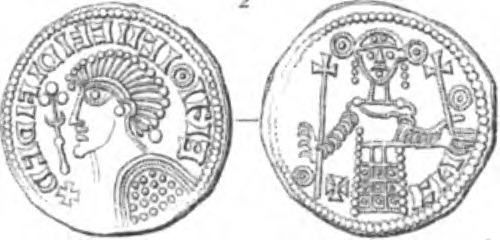
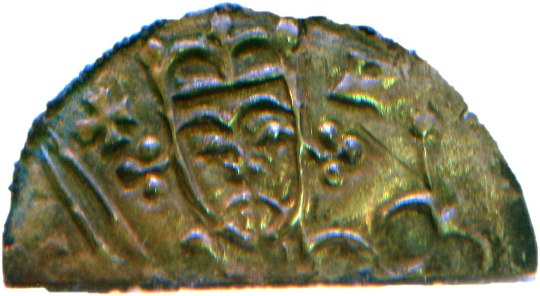
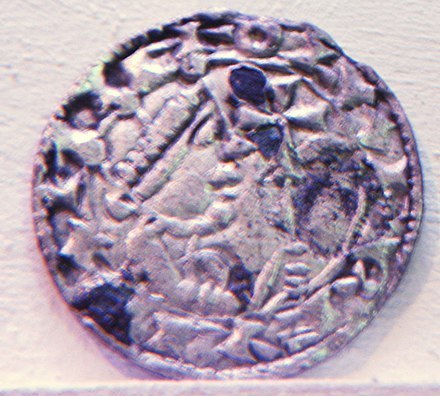

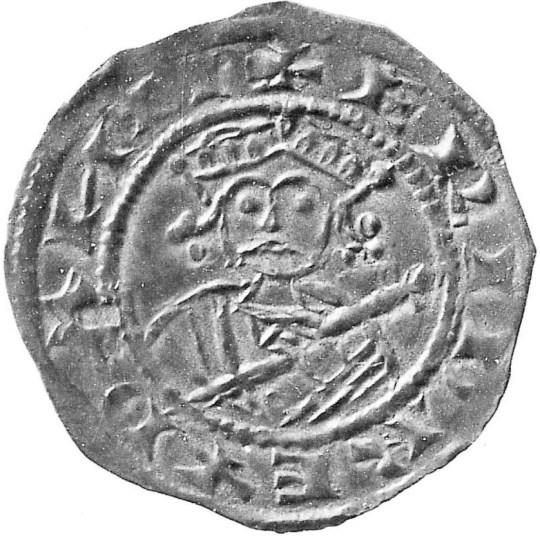

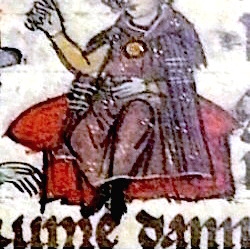
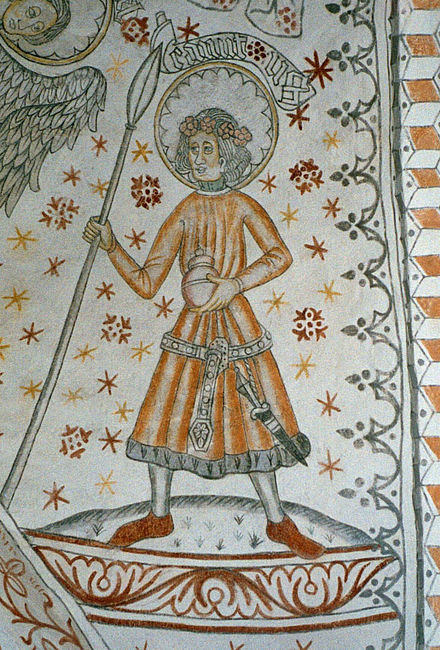
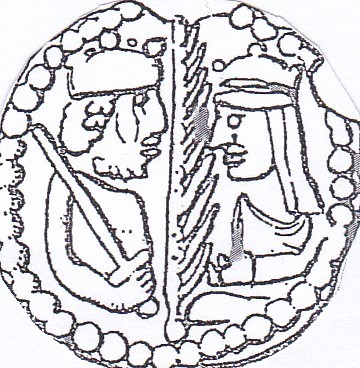
The Bastard Kings and their families
This is series of posts are complementary to this historical parallels post from the JON SNOW FORTNIGHT EVENT, and it's purpouse to discover the lives of medieval bastard kings, and the following posts are meant to collect portraits of those kings and their close relatives.
In many cases it's difficult to find contemporary art of their period, so some of the portrayals are subsequent.
1) Harald III of Denmark (c. 1040 – 1080), son of Sweyn II of Denmark and a concubine named Alvhild
2) Sweyn II of Denmark (c. 1019 –1076), son of Ulf Thorgilsson and Estrid Svendsdatter. Father of Harald III, Cnut IV, Niels I, Olaf I and Erik I
3) Niels I of Denmark (c. 1065 – 1134), son of Sweyn II of Denmark and a concubine
4) Olaf I of Denmark ( c. 1050 – 1095), son of Sweyn II of Denmark and a concubine
5) Cnut IV of Denmark (c. 1042 – 1086), son of Sweyn II of Denmark and a concubine
6) Erik I of Denmark (c. 1060 – 1103), son of Sweyn II of Denmark and a concubine
7) Erik II of Denmark ( c. 1090 – 1137), son of Erik I of Denmark and a concubine
8) Sweyn III of Denmark (c. 1125 – 23 October 1157), son of Erik II of Denmark and a concubine named Thunna
9) Cnut/Knut/Canute Lavard ( 1096 – 1131), son of Erik I of Denmark and his wife Boedil Thurgotsdatter
10) Valdemar I of Denmark (1131 –1182 ), son of Canute Lavard and his wife Ingeborg of Kiev: with his wife Sophia of Minsk (d. 1198), daughter of Volodar of Minsk and Richeza of Poland
#jonsnowfortnightevent2023#asoiaf#a song of ice and fire#echoes of the past#day 10#historical parallels#medieval bastard kings#bastard kings and their families#harald iii of denmark#harald hen#sweyn ii of denmark#niels i of denmark#olaf i of denmark#olaf hunger#cnut iv of denmark#canute the saint#erik i of denmark#erik evergood#erik ii of denmark#erik grathe#sweyn iii of denmark#canute lavard#valdemar i of denmark#canonjonsnow
8 notes
·
View notes
Text
On This Day In Royal History
3 February 1014
King Sweyn Forkbeard died
Sweyn (Svein) was the first Viking king of England.
◼ Sweyn Forkbeard, England’s forgotten king, ruled for just 5 weeks. He was declared King of England on Christmas Day in 1013 & ruled until his death on 3rd February 1014, although he was never crowned.
◼ Sweyn, known as Forkbeard due to his long, cleft beard, was the son of Harald Bluetooth, king of Denmark & was born around 960 AD. Sweyn was baptised a Christian, his father having converted to Christianity.
◼ Sweyn was a brutal man who lived in a brutal time; he was a violent warlord & warrior. He started his life of violence with a campaign against his own father: in around 986 AD Sweyn & his ally Palnatoke attacked & deposed Harald.
◼ Sweyn then turned his attention to England & in the early AD 990s led a campaign of fear & destruction, laying waste to large areas of the country. Ethelred the Unready was king of England at this time. He decided to pay Sweyn to return to Denmark & leave the country in peace, a tax which became known as Danegeld.
◼ However this was not a successful strategy & the Danes continued raiding in the north of England, albeit on a smaller scale. Some even began to settle there. Ethelred was persuaded that in order to protect England, he would have to rid the land of these Danish settlers.
◼ On St. Brices Day, November 13th 1002 Ethelred ordered a general massacre of all Danes in England, including men, women & children. Amongst those killed was Sweyn’s sister Gunhilde.
◼ Sweyn swore revenge on Ethelred & in 1003 landed in England with an invading force. His attacks were on an unprecedented scale, his forces pillaging & plundering without mercy. Such was the devastation that King Ethelred again paid off the Danes in order to gain respite for the terrified populous. The raids continued on & off until in 1013 Sweyn returned to invade once more, landing this time at Sandwich in modern-day Kent. He rampaged through England, the terrified locals submitting to his forces. Finally he turned his attention to London, which proved more difficult to subdue. At first Ethelred and his ally Thorkell the Tall held their ground against him but soon the people began to fear severe reprisals if they did not submit. Disillusioned with their ineffective king, the English earls reluctantly declared Sweyn king and Ethelred fled into exile, first to the Isle of Wight and then to Normandy.
◼ Sweyn was proclaimed king on Christmas Day 1013, but his reign lasted for a matter of weeks; he died suddenly at his capital, Gainsborough in Lincolnshire, on February 3rd 1014. Sweyn was buried in England and his body was later removed to Roeskild Cathedral in Denmark.
◼ How he died is not certain. One account describes him falling from his horse, and another that he died of an apoplexy, but a later legend has him murdered in his sleep by St Edmund, himself martyred by Vikings in the 9th century. It is said that Edmund returned from the grave in the dead of night during Candlemass and killed him with a spear.
👑Archaeologists have recently discovered human remains at Roskilde Cathedral on the site of an old wooden church, built by Harald Bluetooth. It is possible that this unidentified skeleton could be that of Sweyn.
◼ King Sweyn’s descendants through his daughter Estrid continue to reign in Denmark today. Margaret of Denmark, a direct descendant, married James III of Scotland in 1469 introducing the bloodline in the Scottish royal family. Sweyn’s decedents became monarchs in England once again in 1603 after James VI of Scotland inherited the English throne.
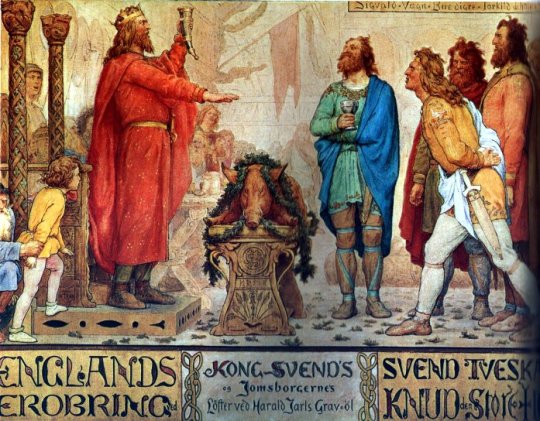
#britishmonarchy#royalfamily#monarchy#royal#thebritishmonarchy#viking#vikings#warlord#warrior#king#forkbeard#viking warrior#history#England#king of england
6 notes
·
View notes
Text
Events 10.23
42 BC – Liberators' civil war: Second Battle of Philippi – Mark Antony and Octavian decisively defeat Brutus's army. Brutus commits suicide. 425 – Valentinian III is elevated as Roman emperor at the age of six. 501 – The Synodus Palmaris, called by Gothic king Theoderic the Great, discharges Pope Symmachus of all charges, thus ending the schism of Antipope Laurentius. 1086 – At the Battle of Sagrajas, the army of Yusuf ibn Tashfin defeats the forces of Castilian King Alfonso VI. 1157 – The Battle of Grathe Heath ends the civil war in Denmark. King Sweyn III is killed and Valdemar I restores the country. 1295 – The first treaty forming the Auld Alliance between Scotland and France against England is signed in Paris. 1641 – Irish Catholic gentry from Ulster tried to seize control of Dublin Castle, the seat of English rule in Ireland, to force concessions to Catholics. 1642 – Battle of Edgehill: First major battle of the First English Civil War. 1694 – British/American colonial forces, led by Sir William Phips, fail to seize Quebec from the French. 1707 – The first Parliament of Great Britain meets. 1739 – War of Jenkins' Ear starts: British Prime Minister Robert Walpole, reluctantly declares war on Spain. 1812 – Claude François de Malet, a French general, begins a conspiracy to overthrow Napoleon Bonaparte, claiming that the Emperor died in Russia and that he is now the commandant of Paris. 1850 – The first National Women's Rights Convention begins in Worcester, Massachusetts, United States. 1861 – U.S. President Abraham Lincoln suspends the writ of habeas corpus in Washington, D.C., for all military-related cases. 1864 – American Civil War: Battle of Westport: Union forces under General Samuel R. Curtis defeat Confederate troops led by General Sterling Price at Westport, Missouri, near Kansas City. 1867 – Seventy-two Senators are summoned by Royal Proclamation to serve as the first members of the Canadian Senate. 1870 – Franco-Prussian War: The Siege of Metz concludes with a decisive Prussian victory. 1906 – Alberto Santos-Dumont flies an airplane in the first heavier-than-air flight in Europe at Champs de Bagatelle, Paris, France. 1911 – First use of aircraft in war: Italo-Turkish War: An Italian pilot takes off from Libya to observe Turkish army lines. 1912 – First Balkan War: The Battle of Kumanovo between the Serbian and Ottoman armies begins. 1915 – Women's suffrage: In New York City, 25,000–33,000 women march on Fifth Avenue to advocate their right to vote. 1917 – Lenin calls for the October Revolution. 1929 – Wall Street Crash of 1929. After a steady decline in stock market prices since a peak in September, the New York Stock Exchange begins to crash. 1935 – Dutch Schultz, Abe Landau, Otto Berman, and Bernard "Lulu" Rosencrantz are fatally shot at a saloon in Newark, New Jersey in what will become known as The Chophouse Massacre. 1939 – The Japanese Mitsubishi G4M twin-engine "Betty" Bomber makes its maiden flight. 1941 – World War II: Field Marshal Georgy Zhukov takes command of Red Army operations to prevent the further advance into Russia of German forces and to prevent the Wehrmacht from capturing Moscow. 1942 – World War II: Second Battle of El Alamein: At El Alamein in northern Egypt, the British Eighth Army under Field Marshal Montgomery begins a critical offensive to expel the Axis armies from Egypt. 1942 – All 12 passengers and crewmen aboard an American Airlines DC-3 airliner are killed when it is struck by a U.S. Army Air Forces bomber near Palm Springs, California. 1942 – World War II: The Battle for Henderson Field begins during the Guadalcanal Campaign and ends on October 26. 1944 – World War II: Battle of Leyte Gulf: The largest naval battle in history begins in the Philippines. 1946 – The United Nations General Assembly convenes for the first time, at an auditorium in Flushing, Queens, New York City. 1955 – Prime Minister Ngô Đình Diệm defeats former emperor Bảo Đại in a referendum and founds the Republic of Vietnam. 1956 – Thousands of Hungarians protest against the government and Soviet occupation. (The Hungarian Revolution is crushed on November 4). 1958 – The Springhill Mine bump: An underground earthquake traps 174 miners in the No. 2 colliery at Springhill, Nova Scotia, the deepest coal mine in North America at the time. By November 1, rescuers from around the world had dug out 100 of the victims, marking the death toll at 74. 1965 – Vietnam War: The 1st Cavalry Division (United States) (Airmobile), in conjunction with South Vietnamese forces, launches a new operation seeking to destroy North Vietnamese forces in Pleiku in the II Corps Tactical Zone (the Central Highlands). 1970 – Gary Gabelich sets a land speed record in a rocket-powered automobile called the Blue Flame, fueled with natural gas. 1972 – Operation Linebacker, a US bombing campaign against North Vietnam in response to its Easter Offensive, ends after five months. 1973 – The Watergate scandal: US President Richard M. Nixon agrees to turn over subpoenaed audio tapes of his Oval Office conversations. 1982 – A gunfight breaks out between police officers and members of a religious cult known as the "Christ Miracle Healing Center and Church" in Miracle Valley, Arizona. The shootout leaves two cultists dead and dozens of cultists and police officers injured. 1983 – Lebanese Civil War: The U.S. Marines barracks in Beirut is hit by a truck bomb, killing 241 U.S. military personnel. A French army barracks in Lebanon is also hit that same morning, killing 58 troops. 1989 – The Hungarian Republic is officially declared by president Mátyás Szűrös, replacing the communist Hungarian People's Republic. 1989 – Bankruptcy of Wärtsilä Marine; the biggest bankruptcy in the Nordic countries until then. 1991 – Signing of the Paris Peace Accords which ended the Cambodian–Vietnamese War. Commemorated as a public holiday in Cambodia. 1993 – The Troubles: A Provisional IRA bomb prematurely detonates in the Shankill area of Belfast, killing the bomber and nine civilians. 1995 – Yolanda Saldívar is found guilty of first-degree murder in the shooting death of popular Latin singer Selena. Three days later, Saldívar was sentenced to life in prison, eligible for parole in 2025 1998 – Israeli–Palestinian conflict: Israeli Prime Minister Benjamin Netanyahu and Palestinian Chairman Yasser Arafat reach a "land for peace" agreement. 2002 – Moscow theater hostage crisis: Chechen terrorists seize the House of Culture theater in Moscow and take approximately 700 theater-goers hostage. 2004 – A powerful earthquake and its aftershocks hit Niigata Prefecture in northern Japan, killing 35 people, injuring 2,200, and leaving 85,000 homeless or evacuated. 2007 – A powerful cold front in the Bay of Campeche causes the Usumacinta jackup rig to collide with Kab 101, leading to the death and drowning of 22 people during rescue operations after evacuation of the rig. 2011 – A powerful 7.2 magnitude earthquake strikes Van Province, Turkey, killing 582 people and injuring thousands. 2011 – The Libyan National Transition Council deems the Libyan Civil War over. 2012 – After 38 years, the world's first teletext service (BBC's Ceefax) ceases broadcast due to Northern Ireland completing the digital switchover. 2015 – The lowest sea-level pressure in the Western Hemisphere, and the highest reliably-measured non-tornadic sustained winds, are recorded in Hurricane Patricia, which strikes Mexico hours later, killing at least 13 and causing over $280 million in damages.
0 notes